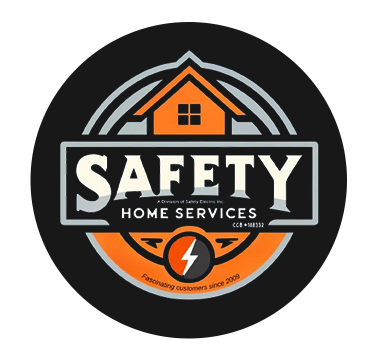Extreme weather events are becoming more frequent and severe, and your home’s electrical system is often the first line of defense. Yet, many homeowners overlook the importance of preparing their electrical systems for storms. This post will explore critical ways to protect your home from electrical damage during a storm and ensure you’re not left in the dark.
1. Install Surge Protection
Storms often cause power surges, damaging electronics and appliances. Installing whole-home surge protectors can help safeguard devices from unpredictable power fluctuations. These systems intercept the excess voltage before it reaches electronics, protecting everything from your refrigerator to your home office equipment.
Key Benefits:
- Protects sensitive electronics from power surges
- Reduces the risk of electrical fires
- Prevents costly appliance damage
2. Ensure Your Wiring is Up to Date
Old or faulty wiring can be dangerous in a storm. If your home is older, it may not be equipped to handle the electrical loads of today’s technology, let alone withstand the stress caused by a storm. Schedule a professional advanced electrical services inspection to identify any outdated wiring and get recommendations for upgrades.
Signs of Outdated Wiring:
- Frequently tripping circuit breakers
- Flickering lights during storms
- Warm or discolored outlets
3. Consider Backup Power Solutions
When the power goes out, you need a reliable backup power solution. Installing a standby generator can keep essential systems running, such as your refrigerator, security system, and even medical devices. A backup power source ensures your home stays safe and functional even when the grid is down.
Types of Backup Solutions:
- Standby generators for long-term outages
- Portable generators for temporary power
- Uninterruptible power supplies (UPS) for critical electronics
4. Inspect Your Electrical Panel
Your home’s electrical panel is the hub of your electrical system. An outdated or faulty panel can lead to severe problems during a storm, such as overloaded circuits or electrical fires. Ensure your panel is modern and equipped to handle today’s energy demands.
When to Upgrade Your Panel:
- Your home is more than 20 years old
- You’ve added major appliances or an EV charging station
- You experience frequent circuit overloads
5. Have an Emergency Electrical Plan
Knowing how to respond in an emergency is crucial. Create a plan that includes shutting off your main power, unplugging sensitive electronics, and using a backup generator if necessary. This will help keep you and your family safe during a storm.
Emergency Plan Checklist:
- Know the location of your main electrical shutoff
- Have a surge protector for essential electronics
- Familiarize yourself with backup power options
Preparing your home’s electrical system for a storm can prevent costly damage and keep your family safe. These steps, from surge protectors to backup power solutions, can give you peace of mind when the next big storm hits.
If you’re unsure about your home’s electrical readiness, contact Safety Home Services for a professional inspection. Our experienced electricians can assess your system and recommend the best solutions to protect your home from electrical damage.


